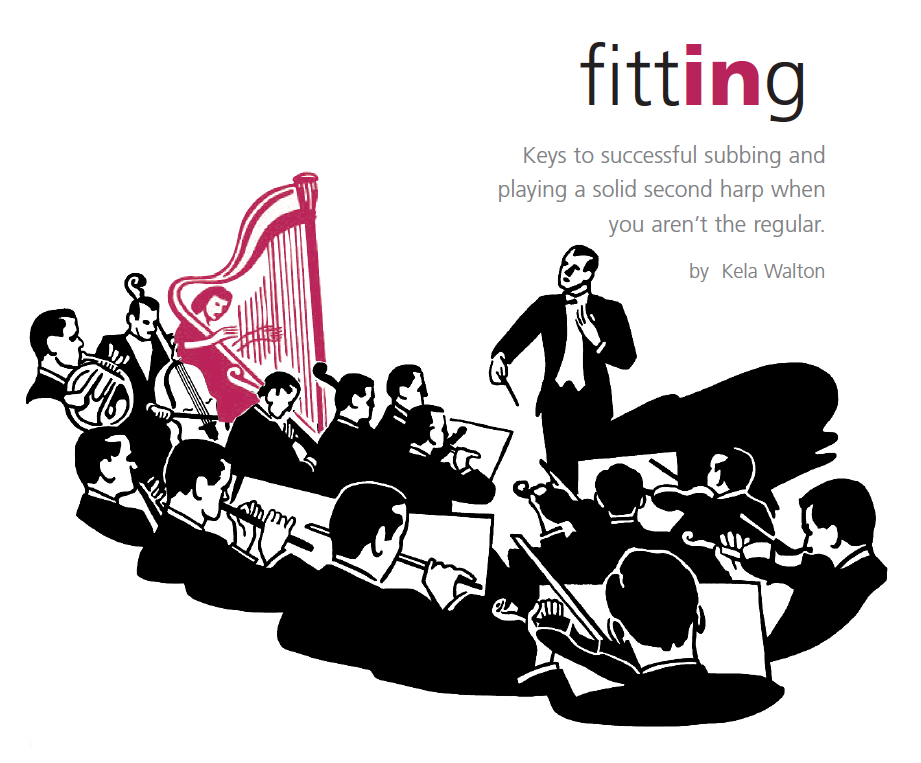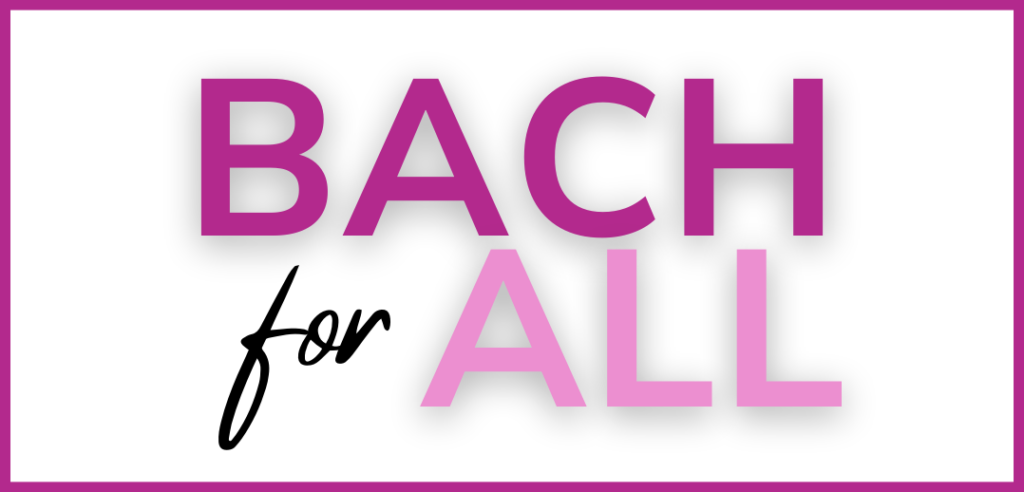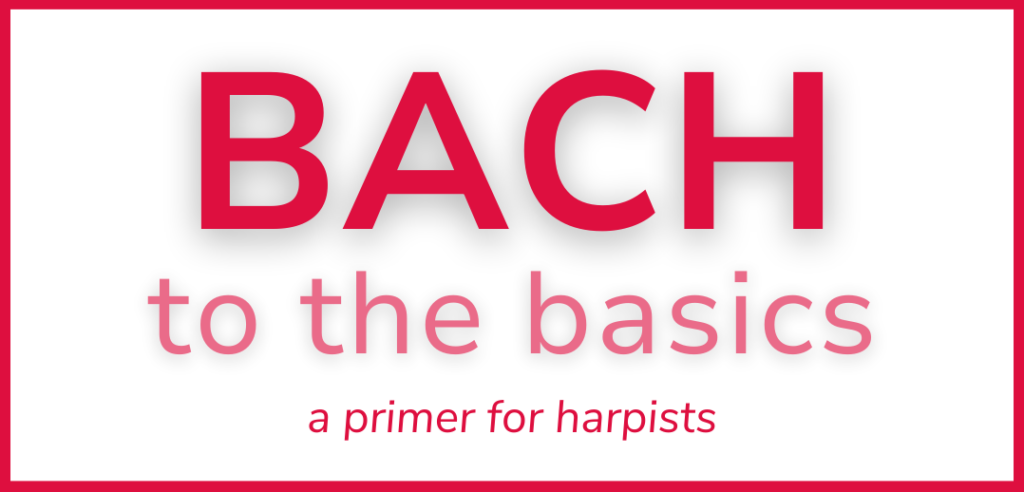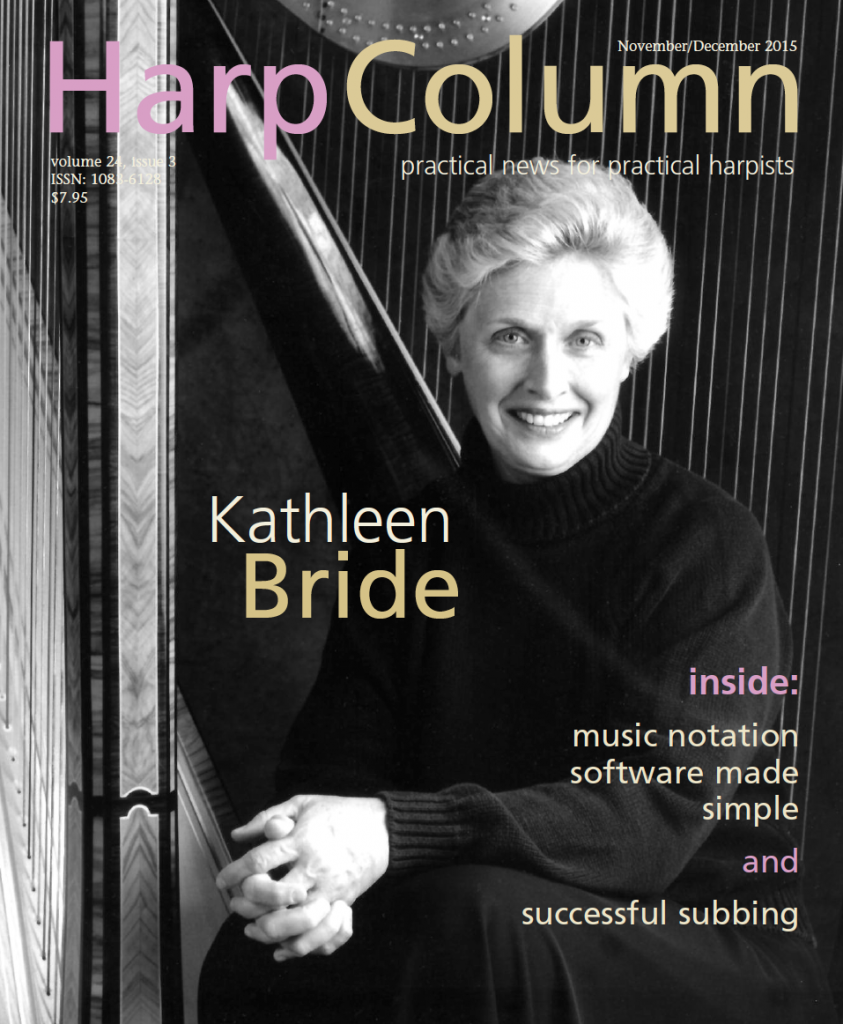Subbing with an ensemble can be both an exciting and daunting task. Whether you are playing second harp with a professional orchestra, a student subbing with a community band, or a freelancer filling in for a few nights of a long-running show, when you find yourself in a substitute situation for a gig, these tips will make your brief time with any group a success.
Be prepared
Like any good Boy Scout will tell you, the secret to survival and success is preparation. From your instrument, to the music, to your practice, time spent preparing is time well spent.
Make sure your harp is in good condition. Now is the time to change that suspicious string that looks like it has seen better days. If you are playing a harp other than your own, arrange a time to go try it out before the gig.
Knowing your music well goes without saying, but if you want to nail it, go the extra mile and resist the temptation to cut corners. Do whatever it takes to get the music as soon as possible. If that means a drive across town to pick it up, do it. If you plan to use your own personal copies of the music, double-check yours with the parts from the ensemble in advance to be sure they are the same edition. Conductors have no patience when they say, “Start at letter G,” and you don’t know where that is because you only have measure numbers in your edition. Some band arrangements are in different keys than the original orchestral versions. Repeats can vary between editions. Conductors can write in cuts—these are not things you want to discover in rehearsal.

“I use as many tools and tricks as I can in my preparation so I have a lot to draw on…”
—Catherine Case, Seattle, Wash.
If the part already has pedal markings and fingerings that you like, then count your lucky stars! If not, and you are pressed for time, ask your harp friends or teacher to see their markings. Many harpists are glad to help, and staying up the night before rehearsal re-inventing the wheel is not the best use of your time. If the part is a terrible mess you can look on the International Music Score Library Project for parts to music in the public domain, or purchase individual parts for some pieces from music retailers. When marking a part that does not belong to you (please, harpists and librarians everywhere implore you) only use pencil that erases cleanly. The regular harpist who uses the part next season will thank you, and the next harpist who gets that rental part will thank you.
When preparing your part, listen to several different recordings of the piece by top-notch ensembles and conductors. If you can find recordings by the group, the particular guest artist, or the conductor with whom you will be working, even better! Listen to the recording with the score (you can find scores at university music libraries or on IMSLP) to learn how your part fits with the other parts. “Writing in any melodies above your accompaniment or rhythmic cues during rests is also helpful,” adds Case. “Learning the score like this helps to insure against a conductor who may be hard to follow. I use as many tools and tricks as I can in my preparation so I have a lot to draw on, especially if there’s only one rehearsal or you have to go right into a performance without a rehearsal.”Harpist Catherine Case has spent much of her career subbing and has played second harp with the Houston Symphony, Seattle Symphony, Seattle Opera, Pacific Northwest Ballet, Singapore Symphony, Sao Paulo State Symphony and more. “As a sub, I like to be over-prepared and treat each performance almost like an audition, since there is always that possibility of not getting asked back,” she says. “Knowing exactly how your part fits into the rest of the ensemble is paramount. The last thing you want to do is draw attention to yourself because you’re lost or unable to follow.”

“Many times I feel playing second harp is much harder than playing principal because you have to be extra alert…”
—Jessica Zhou, Boston, Mass.
Jessica Zhou, principal harpist for the Boston Symphony Orchestra, likes to meet for a harp-only rehearsal when playing with another harpist. “If it’s someone who’s playing second with me for the very first time, I will definitely get together with them before the first orchestra rehearsal and play through the parts,” she says. “This is a good way to make sure we both know our parts well. This includes the right rhythms, notes, entrances, dynamics, and most importantly, playing together as an ensemble.”
Case says the patience and listening required of a second harpist is challenging, but well worth the reward. “I spend a lot of the time watching the principal harpist, oftentimes more than the conductor,” she says. “Everyone interprets the beat slightly differently, so really watching and matching their attack and sound production is important.”
Zhou agrees, “I think for anyone who is playing second harp, it is important to mold your sound with the principal harpist. If there are two harps being used, the harps are a section and need to have the same kind of sound as a section. Many times I feel playing second harp is much harder than playing principal, because you have to be extra alert in terms of trying to match the first harp as well as fitting into the ensemble. The key is to listen like crazy. Only when you keep listening to what’s happening around you will you be able to adjust freely.”
Not all sub jobs are created equal, and subbing for a few performances of a long-running show like a musical, opera, or ballet presents unique challenges. You may have one chance to play a single dress rehearsal before subbing in a performance of the Nutcracker several weeks later or you may only get to listen to a performance of a show before jumping in headfirst to sub for a performance. Especially when your part accompanies dancers, it is essential to be flexible and ready to adapt the timing and style of your playing to match their choreography. For amateur productions of ballets and musicals, the performers on stage often use recorded accompaniments for early rehearsals and home practice. Getting a copy of this recording and practicing with it will help you match the tempo and timing the performers on stage will expect.
Be early
Subbing can be stressful and nerve-wracking; being in a frazzled hurry does not help. Give yourself plenty of time to get to the venue, park, tune, warm-up, and get settled before the rehearsal and performance. The group is not going to wait for you, and being late is the best way to never get hired again, no matter what your excuse. Be in your seat ready to play well before the tuning notes and the first downbeat.
Be professional
This means dress professionally and follow the appropriate rehearsal etiquette for the ensemble. Regular members of the orchestra may wear whatever they want in rehearsal, but a sub needs to dress nicely. When you look good, you feel confident, and every little boost helps! Be sure you know the dress code for the performance and follow it.
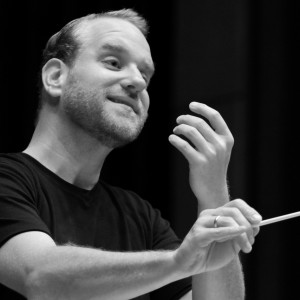
“Subbing in an orchestra does require a bit of moxie or chutzpa.”
—Stephan Sanders, Buffalo, N.Y.
Stefan Sanders, associate conductor of the Buffalo Philharmonic Orchestra, explains professional rehearsal etiquette for orchestral harpists, “If you are a second harpist, never ask the conductor a question. Always ask the principal, and if they don’t know, then they will ask the conductor on your behalf. If you are the only harpist, try to save your questions for the break or for after rehearsal,” he advises. “You do not want to draw attention to yourself by way of asking questions in rehearsal. And…drum roll…don’t ever be late to a service.”
Be polite
Remember, as a sub, you are a guest who would like to be invited back. Always treat everyone—the conductor, the other musicians, the stagehands, music librarians, and personnel manager—with respect and kindness. They can make your time with the group easy or painful. Many of them also have the power to invite you back or recommend you for other gigs. Given the choice between two subs that both play equally well, ensembles will most often hire the musician who is easier to work with.
Be aware and engaged
Pay attention at all times. Put your mobile devices away, yes, even on pieces when you are not playing. You want to be at the top of your game with no distractions. “As a sub it is wise to fit in and go with the flow,” Sanders maintains. “Always be aware of your surroundings, and try to grasp a sense of when the sound actually happens versus the conductor’s beat at all times. The sound will most always be behind the beat.”
Watching the conductor on pieces or movements you do not play is an opportunity to learn the maestro’s language of gestures and gauge how the other musicians respond. Case encourages subs to constantly watch the conductor, even while playing. “If they look at you and want something, you must be aware of this and adjust as needed.”
Zhou points out, “It is so important to always use my ears when playing with any ensemble. Especially hearing others around me. Timing is number one for me. Because the harp is a plucked instrument, apart from entering at the right places, when to place the notes is crucial. Each orchestra has its own timing—some may play on the beat, some tend to play behind the beat—it is most important to be alert and adjust quickly at rehearsals.”
You may watch the conductor like crazy and listen while you play, yet not get any response from the podium. Don’t despair, Sanders affirms, “Most musicians in the orchestra enjoy at least a little attention from a conductor in the form of cues and eye contact during the music. If the conductor does not address you or your section in a rehearsal, one of two things is happening: either they are not aware of you and possibly your part—unfortunately, this happens—or you are not a ‘problem’ that needs attention. So, if you aren’t getting any attention, it is not necessarily a bad thing. Play your part to the best of your abilities. The conductor is responsible for the whole.”
Case advises, “As a second harpist, make sure to always count and know where you are, and listen during rehearsal—even if it does not involve you. Being a reliable backup for a principal is always appreciated. They may break a string and need you to step in, so be prepared!”
Be brave
You might not think bravery is part of a sub’s job description, but Sanders puts it this way, “Subbing in an orchestra does require a bit of moxie or chutzpa. If you are the only harp, play a little more than may be needed, once you have a sense of the timing of the group. Let the conductor and musicians know you are there. You want to make a positive musical impression to the ensemble and the only way to do this is to be heard making a positive musical impression. It is easy for the conductor to reduce the volume, even in a performance.”
Be appreciative
Express your gratitude in person to anyone who hired or helped you, and be sure to thank the conductor after the performance for the experience. Thank the principal harpist you played with or subbed for, either in person or by sending a note. Long after people have forgotten exactly what you said or did, people will remember how you made them feel.
The next time you find yourself called to sub, remember these secrets to success and go for it! •





